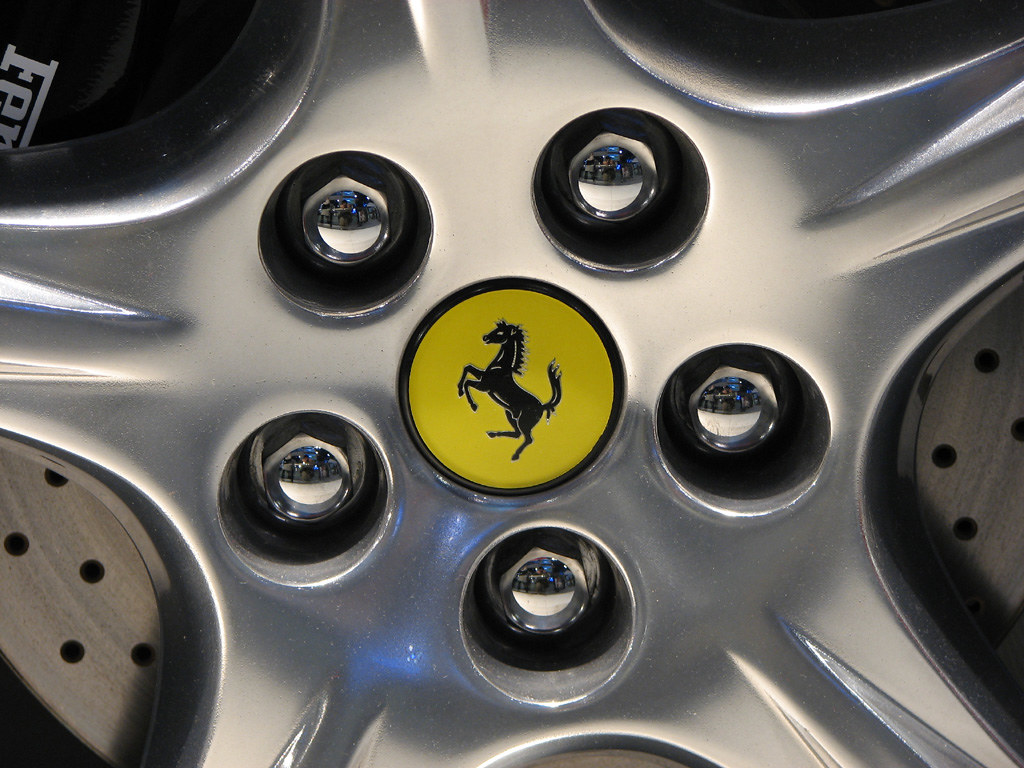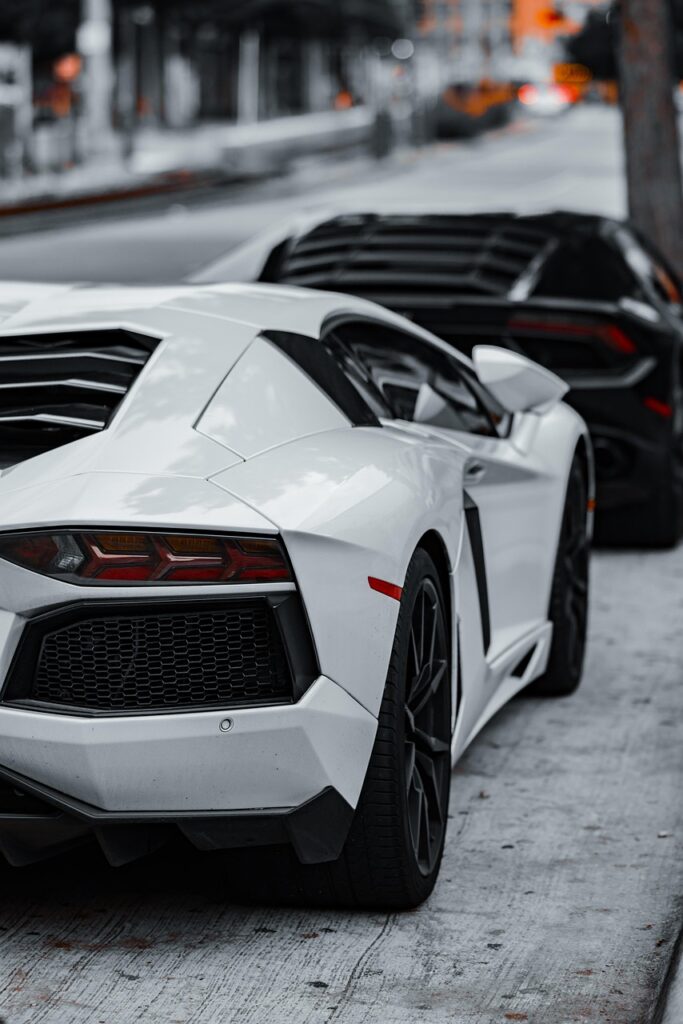
Let’s face it. Sometimes, our cars let us down. Vehicle manufacturers roll out cars that look promising but often don’t live up to the hype. It can suck after spending tens of thousands of dollars or entering a multi-year car loan to develop a case of buyer’s remorse. But it happens all too often, leaving owners with a sinking feeling of ‘what have I done?’
Considering how much new and used cars go for these days, you really need to know what you’re getting into. Making a buying decision based only on the exterior aesthetics and specs might just get you into deep trouble. Trust us, it’s not just about looking good in the driveway; it’s about a relationship that’s going to cost you time, money, and potentially a lot of headaches. Learning from other vehicle owners’ mistakes is one very smart way to make better choices, preventing that gut-wrenching feeling of regret before it even starts.
We’ve all heard the horror stories, or perhaps even lived one ourselves: that moment when the shiny new ride loses its luster, not because of a scratch, but because of a deeper, systemic issue that plagues its very existence. We’re talking about those vehicles where the ownership experience went from exciting to exasperating, fast. Forget wistfully missing a vehicle you sold; this is about outright regret from day one. In the spirit of fellow enthusiasts sharing battle scars and valuable lessons, we’ve compiled a definitive list of 15 vehicles that owners absolutely, positively wish they had never purchased. If you’re in the market, consider this your warning label.
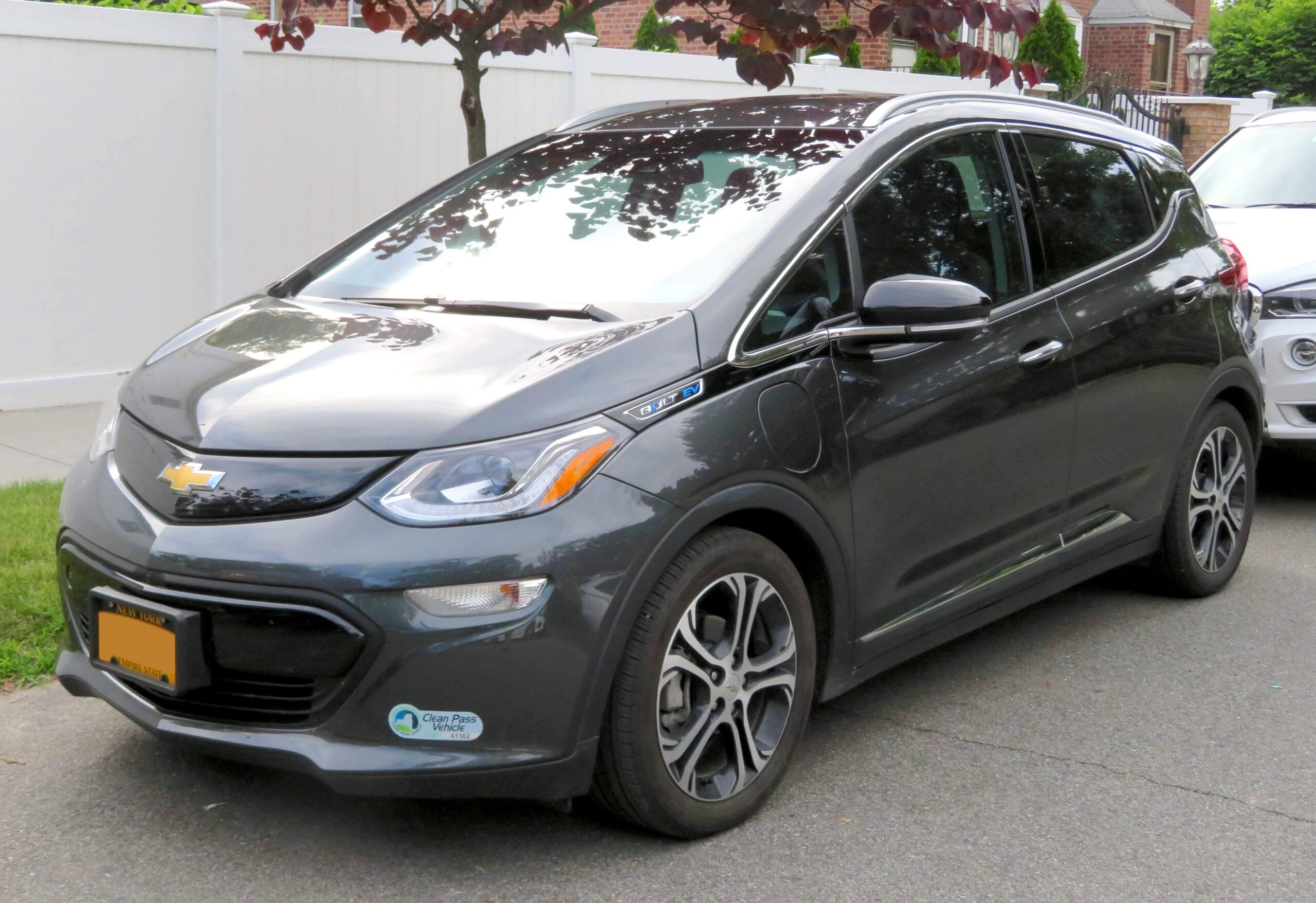
1. **Chevrolet Bolt**Ah, the Chevrolet Bolt. On paper, it sounded like a dream for many: an affordable electric vehicle with a respectable range, perfect for dipping your toes into the EV waters without emptying your bank account. However, as many owners quickly discovered, the dream often turned into a nightmare. This seemingly promising EV became infamous for a problem that no driver ever wants to experience, a flaw so critical it led to widespread fear and frustration among its loyal customer base.
The most infamous issue plaguing the Bolt, and indeed a topic that dominated automotive news cycles, was its propensity for battery-related fires. It’s definitely not the kind of feature you want in your daily driver. These serious safety concerns led to massive, undeniable recalls in both 2020 and 2021, forcing General Motors to take drastic action. The root cause? Flawed lithium-ion batteries supplied by LG, which had the potential to short-circuit, overheat, and, in the worst-case scenarios, ignite into flames. Imagine that dread every time you charged your car.
But wait, there’s more to the Bolt’s tale of woe than just its fiery battery issues. While the battery problems were certainly the headliner, they weren’t the only aspects of the car that left owners wanting. Many drivers found the ride quality to be, well, ‘so-so’ at best. It lacked the refinement or comfort that even some gasoline-powered competitors offered, making longer journeys a less-than-pleasant experience. This wasn’t a car that smoothed out the bumps in life; it seemed to amplify them.
Furthermore, the space for rear passengers and the overall handling characteristics also fell into that ‘just okay’ category, never truly excelling. For an electric vehicle that aimed to be a practical, everyday solution, these ergonomic and dynamic shortcomings only compounded the battery anxiety. It’s clear why many owners, once enamored by the Bolt’s promise, ended up wishing they could simply ‘unbuy’ it and opt for something that offered more peace of mind and a better all-around driving experience.
Car Model Information: 2021 Chevrolet Bolt EV FWD LT
Name: Chevrolet Bolt EV
Caption: 2022 Chevrolet Bolt EV
Manufacturer: General Motors
Production: unbulleted list
ModelYears: unbulleted list
Class: Subcompact car
BodyStyle: hatchback
Layout: Front-engine, front-wheel-drive layout
Predecessor: Chevrolet Spark EV
Categories: 2020s cars, All Wikipedia articles in need of updating, All articles containing potentially dated statements, All articles with unsourced statements, Articles containing potentially dated statements from February 2018
Summary: The Chevrolet Bolt EV (marketed in Europe as Opel Ampera-e) is a battery electric subcompact hatchback manufactured and marketed by General Motors under its Chevrolet brand from late 2016 until late 2023, with a brief hiatus between mid-2021 and early 2022.
The first-generation Bolt was developed and manufactured with LG Corporation. Sales of the 2017 Bolt began in California in December 2016; it was released nationwide and international markets release in 2017. A rebadged European variant was marketed as the Opel Ampera-e in mainland Europe. In 2017, the Bolt was the second-best-selling plug-in car in the United States. It was named the 2017 Motor Trend Car of the Year, the 2017 North American Car of the Year, an Automobile magazine 2017 All Star, and was listed in Time magazine’s Best 25 Inventions of 2016. The Ampera-e was discontinued after 2018. By the end of 2020, GM had sold 112,000 Bolt and Ampera-e cars worldwide. The first-generation Bolt had been subject to at least three recalls due to battery fire risks.
In mid-2023, GM officials said they would discontinue the Bolt; after outcry, they announced plans for a next-generation model, which is expected to be revealed in 2025 for model year 2026.
Get more information about: Chevrolet Bolt
Buying a high-performing used car >>>
Brand: Chevrolet Model: Bolt
Price: $15,961 Mileage: 51,715 mi.
Read more about: Beyond the Sticker: Investigating 10 Cars That Truly Deliver (or Disappoint) on MPG Promises
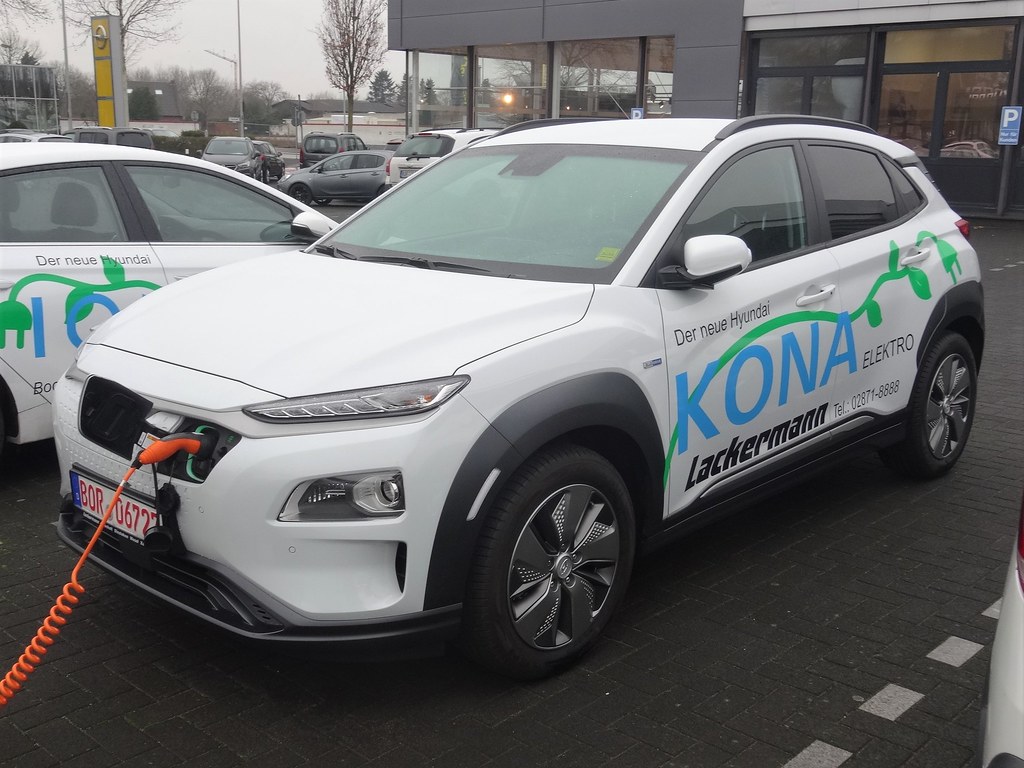
2. **Hyundai Kona Electric**Hyundai, bless their hearts, has been on quite a roll lately, especially with some interesting and genuinely well-received electric vehicles hitting the market. They’ve pushed boundaries and offered compelling alternatives. However, even the best occasionally strike out, and when it comes to electric clunkers, Exhibit A for Hyundai is undoubtedly the Kona Electric. It’s a stark reminder that not every EV venture is a home run, especially when it comes to foundational safety concerns.
Unfortunately, battery fires and subsequent recalls aren’t just a Chevrolet Bolt story; they’re also a significant, problematic part of the Hyundai Kona Electric’s history. It’s a pattern nobody wants to see repeated in the burgeoning EV segment. The carmaker was compelled to issue a worldwide recall in both 2020 and 2021, all in a desperate bid to nip the fire risks in the bud. This involved the rather inconvenient and costly process of replacing battery packs in affected EVs, a clear sign of serious underlying design or manufacturing flaws.
But let’s be brutally honest here: the battery issues, while critically important, were just the tip of the iceberg for many Kona Electric owners. The context makes it clear: ‘Buyer beware!’ This isn’t just about a one-off defect; it implies a deeper dissatisfaction lurking beneath the surface. Owners often found themselves grappling with other frustrations, perhaps related to range consistency, charging speeds, or even the overall build quality that didn’t quite live up to expectations. When a car has such a high-profile, dangerous flaw, it’s hard for other, smaller annoyances not to feel magnified.
Ultimately, the Hyundai Kona Electric, despite its initial promise, earned its spot on the ‘unbuy’ list due to these pervasive problems. It’s a vehicle that taught many buyers a hard lesson about trusting early-generation EV technology, especially when critical components like batteries prove to be a liability. For those who bought one, the experience was less about driving into the future and more about navigating a minefield of potential issues, making that rewind button on a time machine look incredibly appealing.
Car Model Information: 2024 RAM 2500 Big Horn
Name: Hyundai Kona
Caption: Hyundai Kona N Line (SX2)
Manufacturer: Hyundai Motor Company
Aka: Hyundai Kauai (Portugal)
Production: 2017–present
ModelYears: 2018–present
Class: Subcompact crossover SUV
BodyStyle: SUV
Layout: ubl
Categories: 2020s cars, All-wheel-drive vehicles, All Wikipedia articles in need of updating, All Wikipedia articles written in British English, Articles containing Chinese-language text
Summary: The Hyundai Kona (Korean: 현대 코나) is a subcompact crossover SUV produced by the South Korean manufacturer Hyundai. The first-generation Kona debuted in June 2017 and the production version was revealed later that year. It is positioned between the Venue or Bayon and the Tucson in Hyundai crossover SUV line-up. The battery electric version called the Kona Electric (or Kona EV) was first launched in South Korea during the first half of 2018 and rolled out gradually worldwide afterwards.
Get more information about: Hyundai Kona
Buying a high-performing used car >>>
Brand: Hyundai Model: Kona Electric
Price: $46,895 Mileage: 37,555 mi.
Read more about: The No-Regrets Guide: Unmasking 15 Cars Owners Are Desperate to Trade Up From After Just One Year
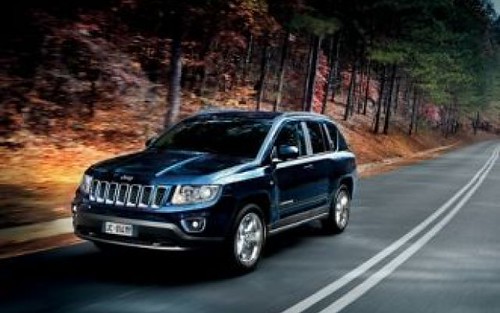
3. **Jeep Compass**Now, let’s talk about the Jeep Compass, a compact SUV that, for many years and across various model years, has proven itself to be a source of constant irritation rather than reliable transportation. If you’re looking to actively avoid a ‘migraine headache on wheels,’ the general consensus among a significant number of owners is to steer a wide berth around this particular SUV. It’s a shame, given Jeep’s adventurous brand image, but the reality for the Compass has often been far from an open road.
One of the most persistent and infuriating issues owners complain about centers around its transmissions. Whether we’re discussing the continuously variable transmission (CVT) or the 9-speed automatic, both have a notorious reputation for being less than smooth operators. Owners frequently report ‘herky-jerky shifting’—a sensation that can make every commute feel like a beginner driver’s lesson—and, in the most dire cases, ‘catastrophic failure.’ When the very means of propulsion is unreliable, it’s hard to find much joy in ownership.
But the transmission woes are not where the Compass’s problems end. Oh no, the list of grievances continues. Many owners have also reported ‘poor engine performance,’ which can manifest as a lack of power, sluggish acceleration, or simply an unrefined driving experience that doesn’t inspire confidence. What’s more, ‘excessive oil consumption’ has been another frequent complaint, turning routine maintenance into a constant vigil and adding unexpected costs to an already problematic ownership.
To top it all off, ‘electrical system issues’ have also joined the party, creating a trifecta of fundamental problems that leave owners utterly exasperated. From minor annoyances to significant breakdowns, the Compass has a knack for finding multiple ways to let its drivers down. It’s a vehicle that, despite its potential, consistently fails to deliver on the reliability and ownership experience that buyers expect, making it a prime candidate for an immediate un-purchase if given the chance to travel back in time.
Read more about: The Quest for Calm: Unveiling the Top 15 Quietest Midsize SUVs of 2024 for a Serene Drive
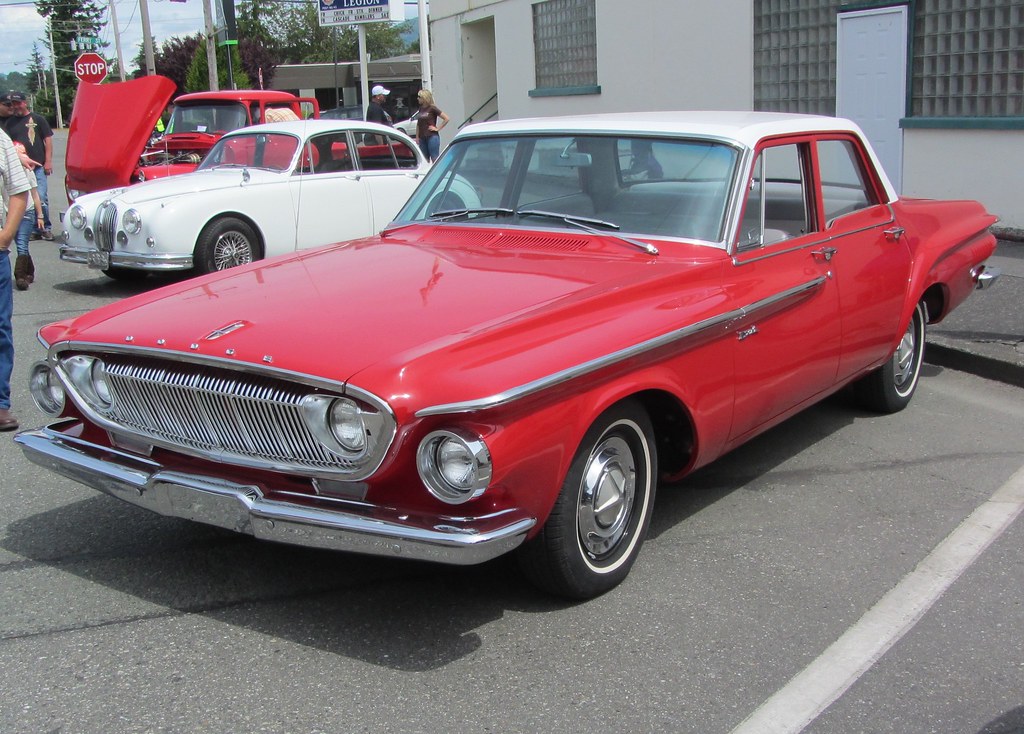
4. **Dodge Dart**The Dodge Dart, a compact sedan, had an ambitious re-entry into the market, attempting to bring European underpinnings to American buyers. However, what it delivered instead was a bewildering array of ‘full-size car problems’ crammed into a small package. For owners, the question often wasn’t ‘what’s wrong?’ but rather, ‘where do we even begin to list all the things going wrong?’ It quickly became apparent that this was a vehicle built for regret, not for reliable daily driving.
Indeed, the Dart was plagued by issues that stretched across nearly every major component system. From the nuanced mechanics of the ‘transmission’ to the very heart of the vehicle, the ‘engine,’ and moving through the crucial ‘suspension’ and ‘brakes,’ owners reported a litany of failures and malfunctions. This wasn’t just a bad batch of cars; it was a fundamental struggle to offer consistent quality and dependable performance across its lifespan. When multiple critical systems are suspect, it undermines all confidence in the vehicle.
The sheer scale of dissatisfaction with the Dodge Dart is truly telling. According to Consumer Reports, a highly respected voice in consumer advocacy, a staggering ‘around six in 10 buyers say they are not satisfied with the vehicle.’ Think about that for a moment: more than half of its owners wished they had made a different choice. That’s not just a few disgruntled customers; that’s a widespread cry of buyer’s remorse, echoing through countless driveways and service bays.
This level of pervasive unhappiness transforms the Dart from a mere car into a monument to poor purchasing decisions. It illustrates how a vehicle can look appealing on the dealership lot but quickly reveal itself to be a money pit and a source of constant frustration. For anyone who took the plunge on a Dodge Dart, the desire to go back in time and choose literally anything else is probably a daily thought, cementing its place on our list of vehicles owners would gladly ‘unbuy’.
Car Model Information: 2015 Dodge Dart SXT
Name: Dodge Dart
Caption: 1966 Dodge Dart GT 2-door hardtop
Manufacturer: Dodge
Production: 1959–1976 (US market)
ModelYears: 1960–1976 (US market)
Class: Full-size
Layout: FR layout
Predecessor: Dodge Coronet#Fourth generation (1957–1959)
Related: Plymouth Valiant,Chrysler Valiant,Dodge Phoenix
Successor: Dodge Aspen,Dodge Diplomat,Talbot Tagora
Categories: 1970s cars, All articles with unsourced statements, Articles with short description, Articles with unsourced statements from December 2023, Articles with unsourced statements from May 2025
Summary: The Dodge Dart is a line of passenger cars produced by Dodge from the 1959 to 1976 model years in North America, with production extended to later years in various other markets.
The production Dodge Dart was introduced as a lower-priced full-size model in 1960 and 1961, but became a mid-size car for one model year for 1962, and was then reduced to a compact for two generations, from 1963 to 1976.
Chrysler had first used ‘Dart’ name plates on two Italian styled show cars, in 1956 and 1957, before it became a Dodge model name. The Dart nameplate was resurrected for a Fiat-derived compact car that was introduced in 2012.
Get more information about: Dodge Dart
Buying a high-performing used car >>>
Brand: Dodge Model: Dart
Price: $9,995 Mileage: 143,082 mi.
Read more about: The No-Regrets Guide: Unmasking 15 Cars Owners Are Desperate to Trade Up From After Just One Year
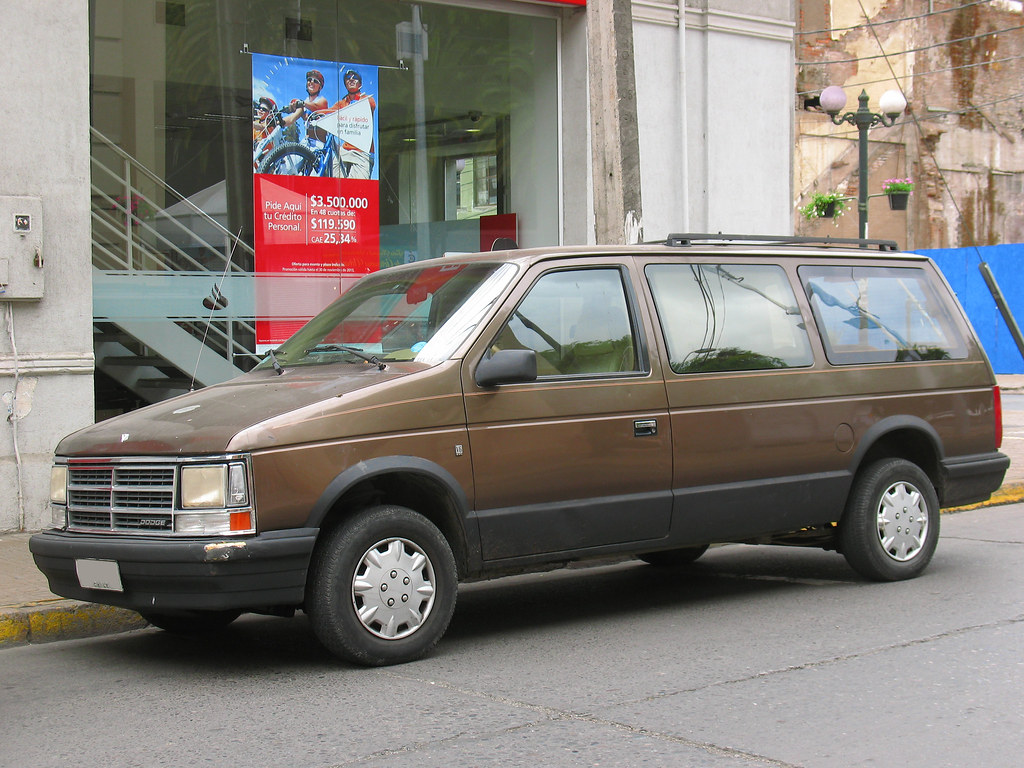
5. **Dodge Grand Caravan**For decades, the Dodge Grand Caravan was a staple of American family life, ferrying kids to soccer practice, hauling groceries, and embarking on countless road trips. Many families undoubtedly have memories – some fond, some perhaps less so – tied to their time with these minivans. Yet, despite its ubiquity and its role in family transport, the Grand Caravan was, for a significant number of owners, ‘anything but smooth driving.’ It frequently became a symbol of compromise and mechanical headache rather than effortless convenience.
It’s inherently difficult to rely on a Dodge Grand Caravan as a versatile ‘family, pet, and thing hauler’ when one of its most critical components, the transmission, is a constant source of anxiety. ‘Transmission failure is a common complaint from owners,’ the context bluntly states, painting a grim picture for those who depended on this vehicle daily. This isn’t a minor hiccup; it’s a potential showstopper for family plans and a huge financial burden.
And it wasn’t just sudden failure that frustrated owners. Often, before the transmissions would ‘go kaput,’ they would provide plenty of warning signs, each more irritating than the last. Issues like ‘delayed gear engagement,’ where the car hesitates awkwardly before selecting a gear, ‘rough shifting,’ making every acceleration a jarring experience, and outright ‘slipping’ gears were all common grievances. These symptoms not only eroded confidence but also led to genuinely unpleasant and unpredictable driving dynamics.
Beyond the colossal transmission problems, owners also frequently ‘complain about electrical system problems and heavy oil consumption.’ These issues just pile onto the existing mechanical despair. Given the constant stream of headaches and unexpected repair bills, it’s no wonder that if ‘they could rewind time and have a do-over, they would gladly choose something else.’ The Dodge Grand Caravan, for all its family-friendly intentions, often delivered an ownership experience that was anything but.
Car Model Information: 2024 RAM 2500 Big Horn
Caption: 2011 Dodge Grand Caravan Mainstreet
Name: Dodge Grand Caravan
Manufacturer: Chrysler Corporation,Daimler AG,Chrysler LLC,Chrysler Group LLC,FCA US LLC
Class: Minivan
Layout: FF layout,F4 layout
Production: November 2, 1983 –August 21, 2020
ModelYears: 1984–2020
Related: Plymouth Voyager,Chrysler Town & Country (minivan),Dodge Mini Ram,Chrysler Voyager,Volkswagen Routan
Assembly: Windsor, Ontario,Fenton, Missouri,Fenton, Missouri,Fuzhou
Successor: Dodge Journey,Chrysler Voyager
Categories: All-wheel-drive vehicles, All articles with unsourced statements, Articles with short description, Articles with unsourced statements from December 2017, Articles with unsourced statements from May 2009
Summary: The Dodge Caravan is a series of minivans manufactured by Chrysler from the 1984 through 2020 model years. The Dodge version of the Chrysler minivans, was marketed as both a passenger van and a cargo van (the only version of the model line offered in the latter configuration). For 1987, the model line was joined by the long-wheelbase Dodge Grand Caravan. Produced in five generations across 36 model years, the Dodge Caravan is the second longest-lived Dodge nameplate (exceeded only by the Dodge Charger). Initially marketed as the Dodge counterpart of the Plymouth Voyager, the Caravan was later slotted between the Voyager and the Chrysler Town & Country. Following the demise of Plymouth, the model line became the lowest-price Chrysler minivan, ultimately slotted below the Chrysler Pacifica.
Sold primarily in the United States and Canada, the Dodge Caravan was also marketed in Europe and other international markets under the Chrysler brand (as the Chrysler Voyager or Chrysler Caravan). From 2008 onward, Dodge marketed the model line only as the Grand Caravan; Ram Trucks sold a cargo-only version of the model line as the Ram C/V Tradesman. The model line was also rebranded as the Volkswagen Routan from 2009 through 2014.
After the 2020 model year, the Dodge Grand Caravan was discontinued, ending production on August 21, 2020. For 2021 production, the Grand Caravan nameplate was moved to Chrysler, which used it for a Canadian-market version of the Chrysler Pacifica (in the United States, the exact vehicle was marketed as the Chrysler Voyager).
For its entire production run, the Dodge Caravan/Grand Caravan was manufactured by Chrysler Canada (now Stellantis Canada) at its Windsor Assembly facility (Windsor, Ontario). From 1987 until 2007, the model line was also manufactured by Chrysler at its Saint Louis Assembly facility (Fenton, Missouri). Since their introduction in late 1983, over 14.6 million Chrysler minivans have been sold worldwide (including export versions and versions sold through rebranding).
Get more information about: Dodge Caravan
Buying a high-performing used car >>>
Brand: Dodge Model: Grand Caravan
Price: $46,895 Mileage: 37,555 mi.
Read more about: Dealer’s Nightmare: The 8 Cars Nobody Will Buy Even with Massive Discounts

6. **Nissan Sentra**The Nissan Sentra has graced roads for many years, and like most long-running vehicle lines, it’s had its ups and downs. While ‘there are some good Nissan Sentra model years,’ the honest truth, according to a chorus of regretful owners, is that ‘some model years were horrific.’ Specifically, anyone in the market for a used Sentra would be well-advised to ‘stay away from the ones made from 2013 to 2019.’ These years represent a particularly dark chapter in the model’s history, predominantly due to one major mechanical flaw.
The primary culprit behind the deep-seated buyer’s remorse for these Sentra models is the ‘infamous CVT’ or continuously variable transmission. This transmission, which promised smooth, seamless acceleration, instead ‘has been a thorn in the side of many Sentra owners.’ It wasn’t just an occasional annoyance; it became a systemic problem that undermined the entire driving experience. The CVT, in these particular years, proved to be an engineering misstep of epic proportions for Nissan.
Owners frequently reported a trio of frustrating CVT problems: ‘overheating,’ which could lead to reduced performance and potential damage; ‘jerky acceleration,’ a complete antithesis to the CVT’s supposed smoothness; and ‘shuddering,’ making the car feel unstable and unwell. These aren’t minor comfort issues; they directly impact the car’s drivability and reliability. Beyond the transmission, the laundry list of issues also includes ‘engine stalling,’ a critical safety concern that can leave drivers stranded or in dangerous situations.
And if that wasn’t enough to make you wish for a time machine, the Sentra also faced ‘many recalls related to the vehicle’s airbags, seatbelts, brakes, and more.’ When fundamental safety components and the core powertrain are all problematic, it paints a clear picture of a vehicle that was simply not ready for prime time. The Nissan Sentra from 2013 to 2019 stands as a stark reminder that a seemingly simple economy car can hide a multitude of expensive and dangerous sins, making it a firm fixture on our list of regrettable purchases.
Car Model Information: 2021 Nissan Sentra SV
Name: Nissan Sentra
Caption: 2021 Nissan Sentra SR (B18; Canada)
Manufacturer: Nissan
Aka: Nissan Sunny
Production: 1982–present
Class: Subcompact car
Predecessor: Nissan Sunny#B310
Categories: 1990s cars, 2000s cars, 2010s cars, 2020s cars, All Wikipedia articles written in American English
Summary: The Nissan Sentra is a series of automobiles manufactured by the Japanese automaker Nissan since 1982. Since 1999, the Sentra has been categorized as a compact car, while previously it occupied the subcompact class. Until 2006, Sentra was a rebadged export version of the Japanese Nissan Sunny, but since the 2013 model year, Sentra is a rebadged export version of the Sylphy. The Sentra nameplate is not used in Japan. Many other countries in Latin America sell their versions of the Sunny as the Sentra. In Mexico, the first three generations of the Sentra were known as the Nissan Tsuru (Japanese for crane), and the B13 model was sold under that name until 2017, alongside the updated models badged as Sentra.
In North America, the Sentra currently serves as Nissan’s compact car, despite being rated as a mid-size car by the EPA due to its interior volume since the 2007 model year. While previous Sentras were subcompacts, the Sentra has grown over the years, with the Nissan Versa having replaced the Sentra in the entry-level area.
The Sentra name was created for Nissan by Ira Bachrach of NameLab, and Bachrach describes the origin as “Nissan wanted consumers to understand that it was quite safe even though it was small. The word Sentra sounds like central as well as sentry, which evokes images of safety.”
Get more information about: Nissan Sentra
Buying a high-performing used car >>>
Brand: Nissan Model: Sentra
Price: $17,961 Mileage: 63,553 mi.
Read more about: Buyer Beware: 10 Flashy Coupes and Sedans That Turn into Bottomless Money Pits Past 80,000 Miles
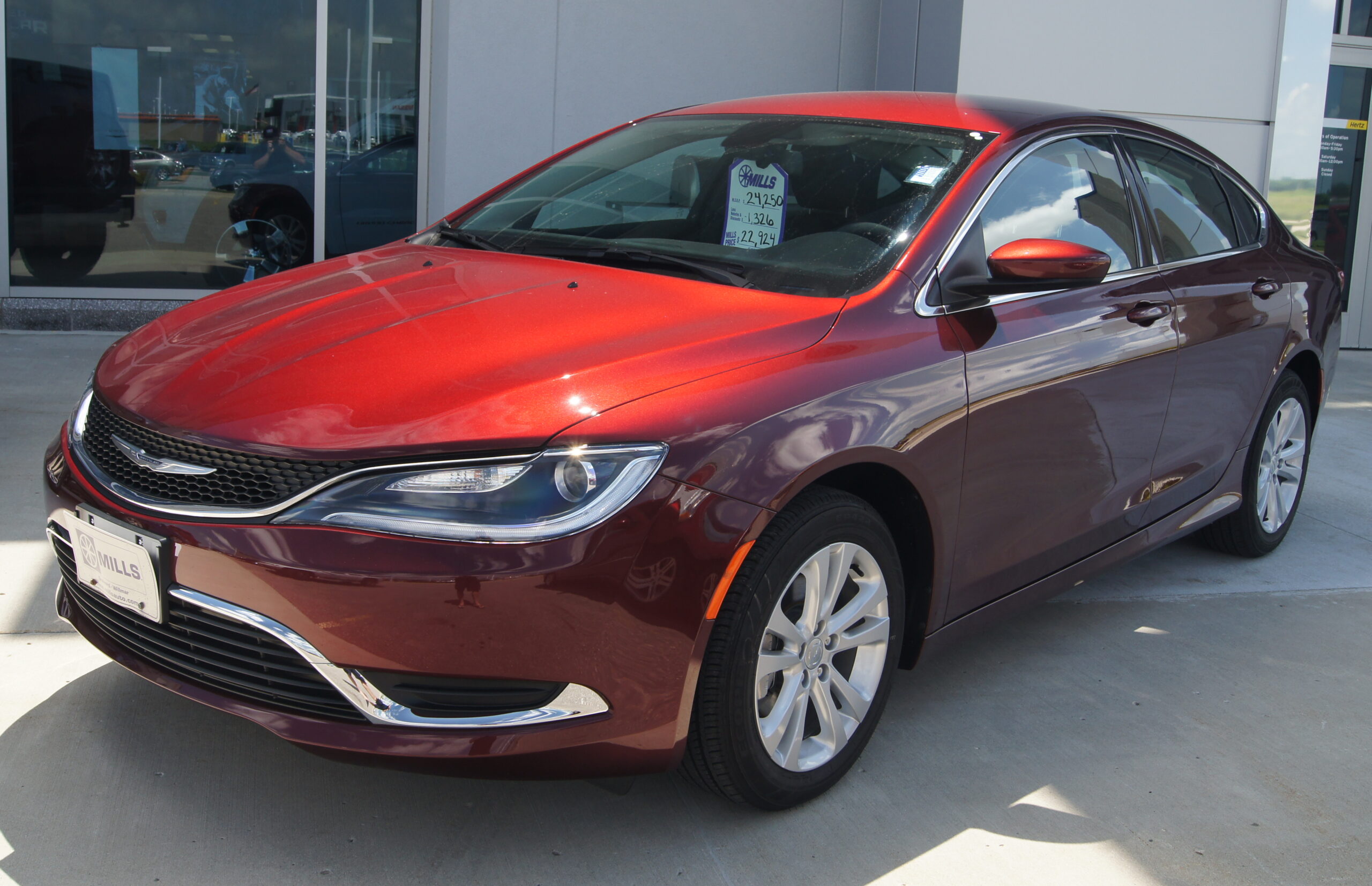
7. **Chrysler 200**The Chrysler 200, a vehicle manufactured from 2011 to 2017, was Chrysler’s attempt at a competitive mid-size sedan. Unfortunately, for many owners, it became synonymous with the phrase ‘reliability issues,’ and not in a good way. Its tenure on the market was marked by a series of problems that steadily eroded owner confidence, particularly in its later model years, leading to a strong desire among buyers to simply turn back the clock and choose an alternative.
One of the most significant and frequently highlighted problem areas for the Chrysler 200 was its transmission, especially for those who owned the 2015, 2016, and 2017 models. Owners of these specific years found the ‘9-speed automatic tranny to be especially problematic.’ This wasn’t just about a slightly rough shift now and then; it was about a core component that fundamentally struggled to perform its duty reliably. When the gearbox is a mess, the whole driving experience suffers immensely.
And to add insult to injury, it wasn’t just ‘problematic’ in a mild sense; the text explicitly states that ‘transmission failure was a thing, too.’ This means that for many, the issue wasn’t just inconvenience but outright breakdown and expensive repairs, often prematurely. A failing transmission is one of the costliest and most frustrating problems a car owner can face, and for the Chrysler 200, it was a distressingly common occurrence. That alone is enough to send anyone into a spiral of buyer’s remorse.
But before you think it was just the transmission, the vehicle also ‘suffers from engine performance problems.’ So, not only did the 200 struggle to shift gears correctly, but its very heart—the engine—was also a source of discontent. This combination of critical powertrain failures creates a perfect storm of automotive regret. For those who invested in a Chrysler 200, especially in its later model years, the ownership experience was often defined by mechanical headaches and a persistent wish that they had chosen differently, solidifying its place among the cars owners would gladly ‘unbuy’.
Car Model Information: 2013 Chrysler 200 Touring
Name: Chrysler 200
Manufacturer: Chrysler
Production: 2010–2016
ModelYears: 2011–2017
Assembly: Sterling Heights, Michigan
Class: Mid-size car
Sp: us
Predecessor: Chrysler Sebring
Categories: 2010s cars, All articles with dead external links, All articles with unsourced statements, Articles with dead external links from July 2020, Articles with permanently dead external links
Summary: The Chrysler 200 is a mid-size sedan that was manufactured and marketed by Chrysler from model years 2011 to 2017 across two generations in four-door sedan and two-door convertible (first generation only) body styles.
The 200 nameplate debuted on the 200C, a prototype hybrid vehicle shown at the 2009 North American International Auto Show in Detroit and based on the Chrysler 300. The 200C concept was engineered to accept either traditional gasoline, hybrid or full-electric powertrains.
Get more information about: Chrysler 200
Buying a high-performing used car >>>
Brand: Chrysler Model: 200
Price: $7,995 Mileage: 117,030 mi.
Read more about: Get Ready to Rev Your Engines: A Deep Dive Into Val Kilmer’s Jaw-Dropping Car Collection, Both On-Screen and Off!

8. **Nissan Altima**Moving right along our gauntlet of disappointment, we arrive at another Nissan, the Altima. Much like its Sentra sibling, this mid-size sedan has proven to be a consistent source of buyer’s remorse for a multitude of owners. While it might look sleek on the dealership lot, especially in its problematic 2013 to 2019 model years, the shiny exterior often masked a deeply troubled mechanical heart, leaving many drivers wishing they had simply walked away.
The primary villain in the Altima’s story, much like a recurring nightmare in the Nissan lineup, is once again the continuously variable transmission (CVT). This transmission, designed for efficiency and smooth power delivery, instead turned into a hotbed of frustrations, raising its ugly head with an undeniable frequency. Owners reported a range of issues from sluggish response to outright failure, transforming what should be a seamless drive into a jarring, unpredictable experience that made daily commutes a source of anxiety rather than ease.
But the CVT, while certainly the star of this mechanical horror show, wasn’t the Altima’s only flaw. Drivers also grappled with serious complaints about the steering system, making the car feel less responsive and secure than it should. Add to that the pervasive issues of excessive oil consumption and oil leaks, which turn routine maintenance into a costly, never-ending battle. For a car that’s supposed to be a reliable family workhorse, the Altima in these years often became a financial drain and a constant headache, making that ‘unbuy’ button look incredibly tempting.
Car Model Information: 2025 Nissan Altima S
Name: Nissan Altima
Caption: 2024 Nissan Altima SR (L34; US)
Manufacturer: Nissan
Aka: Nissan Bluebird
Production: 1992–present
Class: Compact car
Predecessor: Nissan Bluebird,Nissan Stanza
ModelYears: 1993–present
Categories: 2000s cars, 2010s cars, 2020s cars, All-wheel-drive vehicles, All Wikipedia articles written in American English
Summary: The Nissan Altima is a mid-size car manufactured by Nissan since 1992. It is a continuation of the Nissan Bluebird line, which began in 1955.
The Altima has historically been larger, more powerful, and more luxurious than the Nissan Sentra but less so than the Nissan Maxima. The first through fourth-generation cars were manufactured exclusively in the United States and officially sold in North and South America, along with the Middle East and Australia. For other markets, Nissan sold a related mid-size sedan called the Nissan Teana which was between the Altima and Maxima in terms of size. In 2013, the Teana became a rebadged version of the fifth-generation Altima.
The name “Altima” was originally applied to a top trim line of the Nissan Leopard for the Japanese market in 1986, and then to the Nissan Laurel Altima mid-size car sold in Central America and the Caribbean before 1992. In 1992, Nissan discontinued the Stanza which was a Nissan Bluebird clone, replacing it with the US-built Altima, while remaining a compact car. The first Altima was produced in June 1992, as a 1993 model. All Altima models for the North American market were built in Smyrna, Tennessee, until June 2004, when Nissan’s Canton, Mississippi plant also began producing the model to meet high demand.
Get more information about: Nissan Altima
Buying a high-performing used car >>>
Brand: Nissan Model: Altima
Price: $26,490 Mileage: 11 mi.
Read more about: Buyer Beware: 10 Flashy Coupes and Sedans That Turn into Bottomless Money Pits Past 80,000 Miles
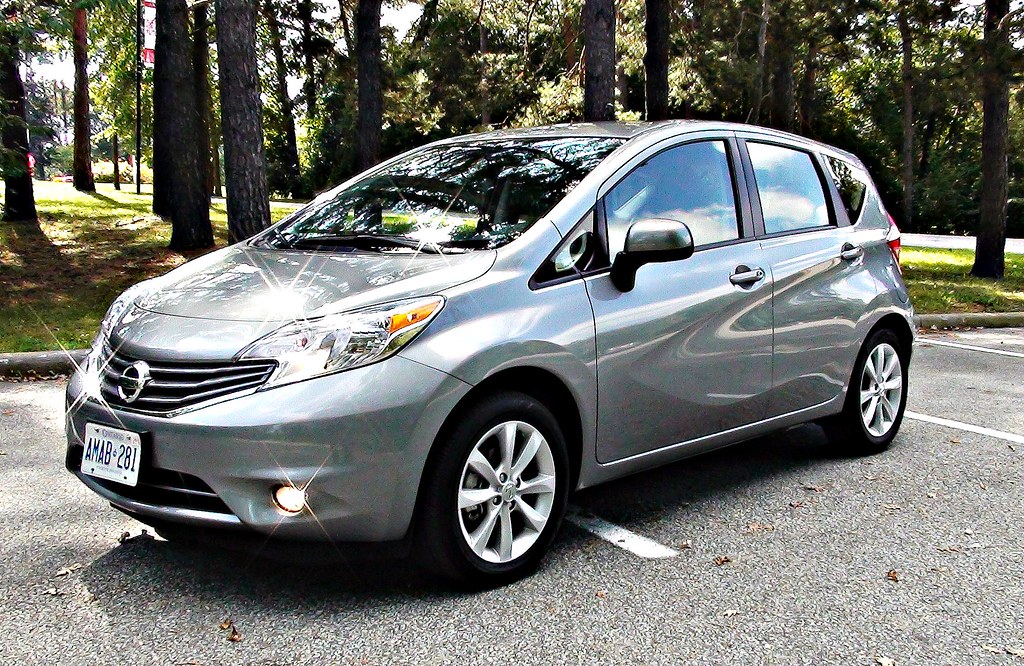
9. **Nissan Versa Note**From one Nissan to another, our journey through automotive regret brings us to the Nissan Versa Note. This small hatchback was pitched as an affordable entry into the market, a perfect option for those on a tight budget. And yes, it was super-cheap. However, as many owners quickly learned, that low price tag wasn’t a sign of incredible value; it was a rather direct reflection of the quality level, or lack thereof, packed into this compact offering.
Predictably, the notorious continuously variable transmission (CVT) makes another appearance, frustrating Nissan Versa Note owners to no end. Instead of providing the smooth, economical ride it promised, this transmission often delivered sluggishness, unpredictable behavior, and the kind of mechanical grumbling that makes you wince every time you press the accelerator. It’s hard to enjoy saving money on the purchase when the driving experience itself feels like a constant compromise, battling with a gearbox that just doesn’t want to cooperate.
Compounding the CVT woes was the decidedly anemic acceleration provided by its 1.6-liter 4-cylinder engine. In a world where even economy cars offer a reasonable amount of zip, the Versa Note felt perpetually out of breath, struggling to keep up with traffic or merge onto highways with any semblance of confidence. This combination of a problematic transmission and a weak engine turned what should have been an economical city car into a source of constant irritation, proving that sometimes, buying cheap only means paying more in frustration later.
Car Model Information: 2024 RAM 2500 Big Horn
Name: Nissan Note
Manufacturer: Nissan
Production: 2004–present
Class: Mini MPV
BodyStyle: hatchback
Layout: Front-engine, front-wheel-drive layout,Front-engine, four-wheel-drive layout
Predecessor: Nissan Almera Tino
Aka: Nissan Versa
Caption: Nissan Note (E13)
Categories: 2010s cars, 2020s cars, All-wheel-drive vehicles, All Wikipedia articles written in British English, All articles containing potentially dated statements
Summary: The Nissan Note (Japanese: 日産・ノート, Hepburn: Nissan Nōto) is a supermini/subcompact hatchback or a mini MPV manufactured and marketed globally by Nissan. Introduced in 2004, the first-generation Note was primarily marketed in Japan and Europe, and was produced in Japan and the United Kingdom. The second-generation model was sold in other regions, including North America where it was manufactured in Mexico and marketed as the Versa Note, and Thailand, where it serves as one of the B-segment hatchback offered by the brand alongside the smaller March/Micra under the Eco Car tax scheme.
In 2017, the second-generation Note was replaced by the French-built K14 Micra for the European market. The Versa Note was discontinued in North America in 2019 due to the decreasing demand for subcompact hatchbacks in the region. It continued to be produced and sold in Japan up to the introduction of the third-generation Note in late 2020.
The Note was introduced with a series hybrid drivetrain in late 2016 as the Note e-Power. Due to its popularity and the push of electrification, the third-generation Note is only available with the e-Power drivetrain, with a WLTC fuel economy of 29.5 kilometres per litre (69 mpg‑US).
Get more information about: Nissan Note
Buying a high-performing used car >>>
Brand: Nissan Model: Versa Note
Price: $46,895 Mileage: 37,555 mi.
Read more about: Owner Alert: These 15 Popular Pickup Trucks Become Budget Breakers After a Decade of Ownership
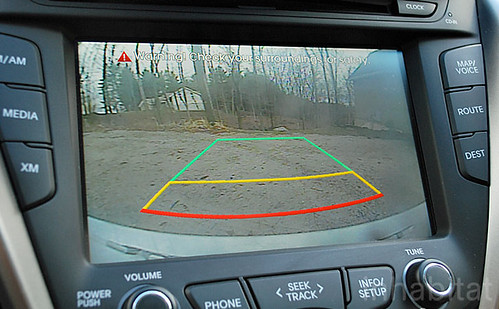
10. **Hyundai Veloster**Now, for something a bit different, let’s talk about the Hyundai Veloster. On the surface, this car was a breath of fresh air: a cool-looking machine with distinctive styling, a quirky three-door layout, and the promise of responsive handling. It screamed “fun to drive!” and offered a unique alternative in a sea of bland compacts. Yet, beneath that interesting facade, a host of problems lurked, problems that were, for many owners, simply too hard to ignore and ultimately led to profound regret.
The most alarming issues centered around the Veloster’s engine, which had a disturbing propensity for catastrophic failure. Imagine buying a car for its sporty appeal, only to find its very heart susceptible to giving up the ghost entirely, often prematurely and expensively. This isn’t a minor rattle; it’s a show-stopping, bank-account-emptying disaster. Paired with this, its dual-clutch transmission (DCT) also proved to be a significant liability, suffering from infuriating issues like delayed acceleration, slipping, and jerky shifts that undermined any pretense of responsive driving.
And as if dealing with a potentially self-destructing engine and a misbehaving transmission wasn’t enough, the Hyundai Veloster also piled on with chronic suspension and steering problems. These issues not only made the ride uncomfortable but also eroded driver confidence, turning what was supposed to be a nimble, engaging car into a wobbly, unpredictable mess. For a vehicle that sold itself on unique aesthetics and driving dynamics, the Veloster delivered an ownership experience that highlighted mechanical nightmares over styling triumphs, making its spot on this list well-earned.
Car Model Information: 2012 Hyundai Veloster Base
Name: Hyundai Veloster
Manufacturer: Hyundai Motor Company
Production: 2011–2022
Class: Sport compact car
Layout: Front-engine, front-wheel-drive layout
BodyStyle: hatchback
Predecessor: Hyundai Tiburon
ModelYears: 2012–2022
Assembly: Ulsan
Categories: All Wikipedia articles in need of updating, All articles with unsourced statements, Articles containing Korean-language text, Articles with short description, Articles with unsourced statements from May 2018
Summary: The Hyundai Veloster (Korean: 현대 벨로스터, romanized: Hyeondae Belloseuteo) is a compact car first produced in 2011 by Hyundai, with sales beginning in South Korea on March 10, 2011, and in Canada and the United States since the fall of 2011. In South Korea, it was marketed under Hyundai’s ‘Premium Youth Lab’. It was unveiled on January 10, 2011, at the Detroit Auto Show, and fills the void left when Hyundai discontinued the Hyundai Tiburon after the 2008 model year.
The car differs from most other hatchbacks with its asymmetrical door configuration, featuring one large door on the driver side and two smaller doors on the passenger side. This configuration is more common on commercial vehicles and minivans.
Get more information about: Hyundai Veloster
Buying a high-performing used car >>>
Brand: Hyundai Model: Veloster
Price: $7,645 Mileage: 83,462 mi.
Read more about: The No-Regrets Guide: Unmasking 15 Cars Owners Are Desperate to Trade Up From After Just One Year
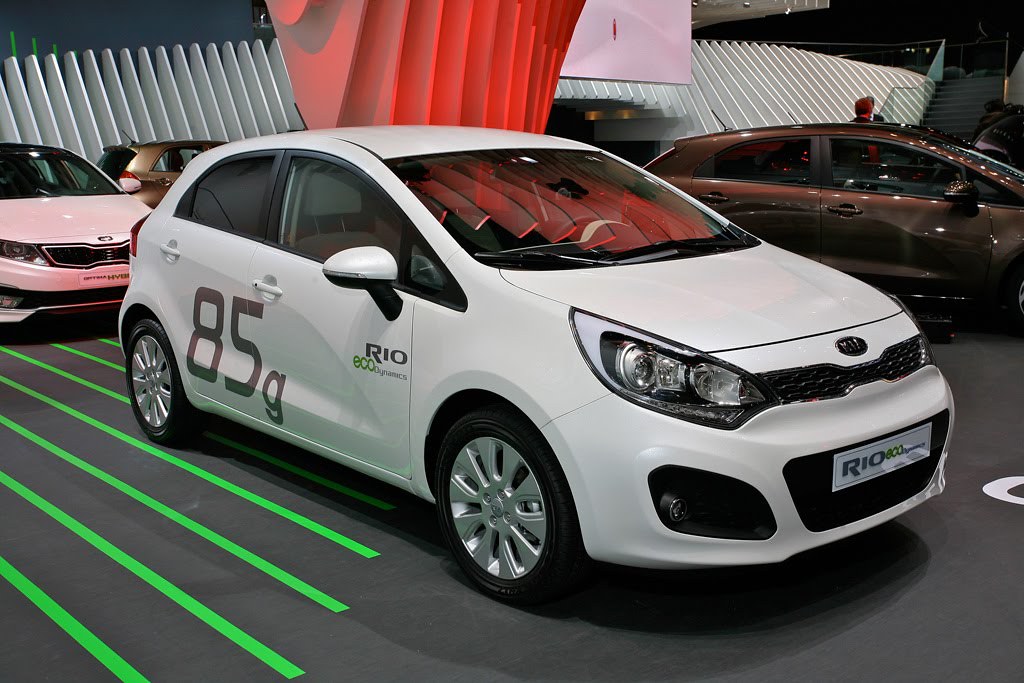
11. **Kia Rio**It seems that even affordability can come with a steep price in the long run, and the Kia Rio is a prime example of this automotive paradox. While often lauded for its low entry cost and admirable fuel efficiency, owners of the Kia Rio have accumulated their fair share of buyer’s remorse, wishing they could rewind time and pick a different path. This isn’t just about minor annoyances; it’s about fundamental issues that chip away at the very core of reliable transportation.
The most prevalent and frustrating issues for Rio owners revolved around its engine. These powerplants were notoriously prone to problems like rough idling and misfires, symptoms that usually point to deeper concerns with critical components such as spark plugs or ignition coils. When your engine can’t even maintain a steady idle, it casts a long shadow over the entire vehicle’s dependability, turning every start-up into a moment of trepidation and every drive into a prayer.
Beyond the engine’s reluctance to perform consistently, owners also frequently complained about the cheap interior quality and comfort issues. For a car meant for daily commuting, a lack of comfort and a cabin that feels flimsy only magnifies the driving frustrations. When you combine persistent mechanical woes with an interior that fails to provide even basic solace, it’s easy to see why the Kia Rio, despite its initial appeal of being a budget-friendly option, ultimately left many owners feeling short-changed and full of regret.
Car Model Information: 2023 Kia Rio S
Name: Kia Rio
Caption: Fourth generation Kia Rio
Manufacturer: Kia
Aka: Kia Pride (2005–2017),Kia K2 (China; 2011–2020)
Production: November 1999 – December 2023
ModelYears: 2001–2023 (North America)
BodyStyle: hatchback
Class: Subcompact car
Layout: Front-engine, front-wheel-drive layout
Predecessor: Kia Pride,Kia Avella
Successor: Kia K3 (BL7),Kia Soluto
Categories: 2000s cars, 2010s cars, Articles containing Korean-language text, Articles with short description, CS1 Croatian-language sources (hr)
Summary: The Kia Rio (Korean: 기아 리오) is a subcompact car manufactured by Kia from 1999 to 2023. Body styles have included a three and five-door hatchback and four-door sedan, equipped with inline-four gasoline and diesel engines, and front-wheel drive.
The Rio replaced the first generation Pride—a rebadged version of the Ford Festiva—and the Avella, a subcompact sold as a Ford in some markets. A second generation was introduced in 2005 in Europe and in 2006 in North America, sharing its platform with the Hyundai Accent, a subcompact manufactured by its sister Hyundai Motor Company in South Korea.
In August 2023, the K3 was introduced as its successor in several markets such as Mexico and the GCC countries.
Get more information about: Kia Rio
Buying a high-performing used car >>>
Brand: Kia Model: Rio
Price: $16,385 Mileage: 22,509 mi.
Read more about: Amidst Rising Costs: Unveiling the Top 10 New Cars Still Delivering Value in 2025
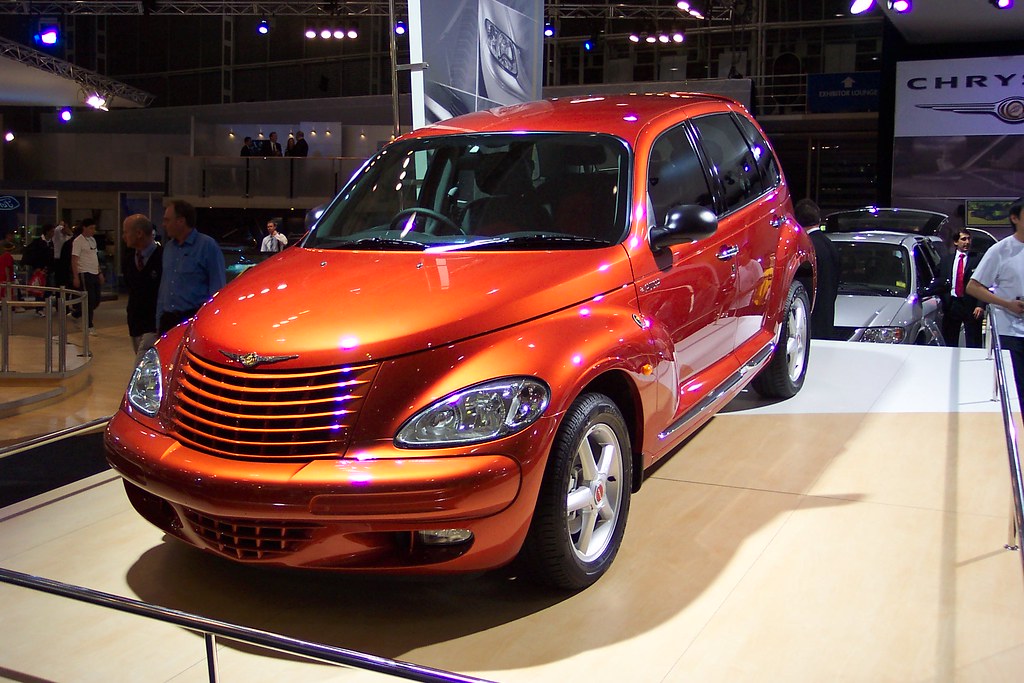
12. **Chrysler PT Cruiser**Ah, the Chrysler PT Cruiser. This compact car certainly stirred up a conversation, didn’t it? With its distinctive retro styling, it was one of those vehicles that people either loved or, perhaps more accurately, loved to hate. But setting aside the polarizing aesthetics for a moment, because honestly, the looks weren’t the only things wrong with this vehicle. For many owners, the PT Cruiser quickly evolved from a quirky statement piece into a relentless mechanical challenge, a truly regrettable purchase.
The laundry list of engine issues for the PT Cruiser was nothing short of legendary, ranging from the inconvenient to the downright catastrophic. Owners frequently reported problems like stalling, leaving drivers stranded at the most inopportune moments, to rough idling that made the car feel perpetually unwell. And the problems didn’t stop there; overheating and dreaded head gasket failure were also common complaints, turning routine drives into high-stakes gambles on whether the engine would survive the journey.
But wait, there’s more misery to be had! Beyond the engine bay, the PT Cruiser was also plagued by persistent transmission and electrical problems. These fundamental system failures, among other less critical but equally annoying issues, combined to create an ownership experience defined by frequent, expensive trips to the repair shop. It’s no wonder that a significant number of PT Cruiser owners often reflect on their buying decision with profound regret, yearning for a time machine to simply ‘unbuy’ this retro headache.
Car Model Information: 2024 RAM 2500 Big Horn
Name: Chrysler PT Cruiser
Manufacturer: Chrysler
ModelCode: PT,PG
Production: 2000–2010
ModelYears: 2001–2010
Assembly: Toluca, Mexico State
Designer: Bryan Nesbitt
Class: Compact car
BodyStyle: convertible
Platform: Chrysler PT platform
Related: Dodge SRT4,Dodge Neon
Predecessor: Dodge Neon
Successor: Dodge Caliber
Layout: Front-engine, front-wheel-drive layout
Engine: ubl
Transmission: Ultradrive#40TE
Wheelbase: 103 in
Abbr: on
Length: 168.8 in
Width: 67.1 in
Height: 63 in
Weight: 3123 lb
Categories: 2010s cars, All articles with unsourced statements, Articles with short description, Articles with unsourced statements from March 2018, Cars discontinued in 2010
Summary: The Chrysler PT Cruiser is a compact car that was built by the American company Chrysler from 2001 until 2010. Introduced as a five-door hatchback wagon, a two-door convertible variant was also made from 2005 until 2008.
Originally planned as a Plymouth model, the PT Cruiser was ultimately marketed as a Chrysler when Plymouth was discontinued. Intended to invoke 1930s aesthetics, the exterior of the PT Cruiser was designed by Bryan Nesbitt. The model received an intermediate facelift for the 2006 model year. Interior packaging was noted for its high roof, high h-point seating, and flexible cargo and passenger configurations enabled by a multi-level rear cargo shelf and rear seats a user could fold, tumble, or remove.
The PT Cruiser was produced in Mexico and Austria at the Toluca Car Assembly and Eurostar Automobilwerk factories respectively. By the end of production in July 2010, worldwide production had reached 1.35 million.
In its nameplate, PT stands for “Personal Transport” or “Personal Transportation”. PT was the PT Cruiser’s product code for the Mexican-made units.
Get more information about: Chrysler PT Cruiser
Buying a high-performing used car >>>
Brand: Chrysler Model: PT Cruiser
Price: $46,895 Mileage: 37,555 mi.
Read more about: Revving Up History: Unearthing the Forgotten Engines That Forged American Muscle Legends
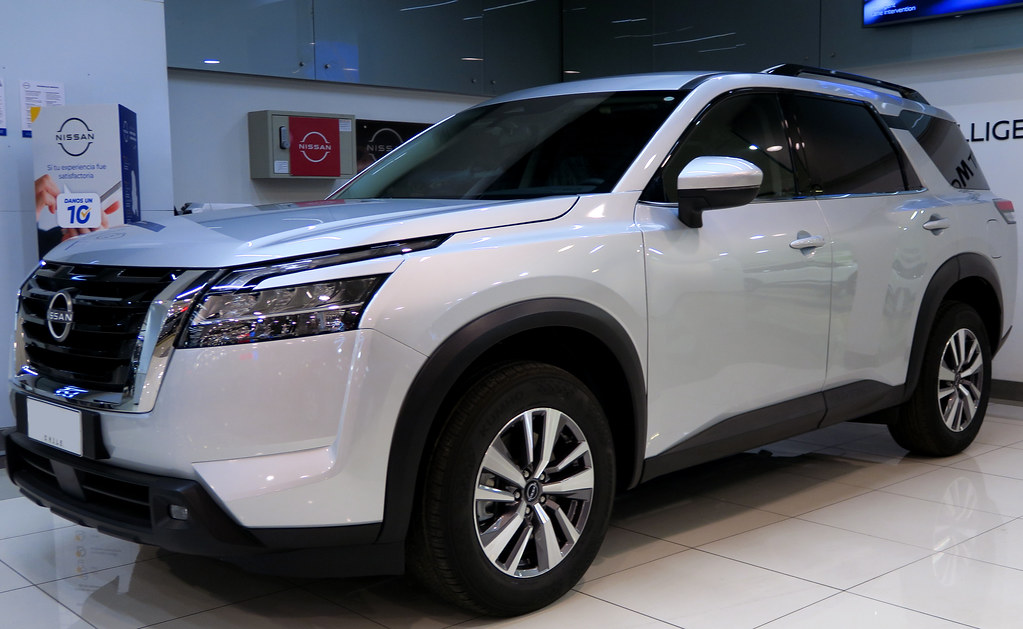
13. **Nissan Pathfinder**The Nissan Pathfinder is undeniably a popular SUV, a choice for many families looking for versatility and capability. However, its popularity hasn’t shielded it from a barrage of problems that have left numerous owners regretting their purchasing decisions. While the idea of exploring new paths might sound appealing in a Pathfinder, the reality for many has been a journey fraught with mechanical breakdowns and relentless frustration, particularly when it comes to one familiar component.
Unsurprisingly, the continuously variable transmission (CVT) rears its ugly head yet again, becoming a significant point of contention for Pathfinder owners. This is the very transmission that, in theory, should provide seamless power delivery. In practice, however, owners frequently experienced rough shifting, unnerving shuddering, and even overheating, all of which directly undermined the vehicle’s reliability and driving pleasure. It’s a bitter pill to swallow when a core component of your “reliable” SUV is essentially a ticking time bomb.
To the further chagrin of some Nissan Pathfinder owners, these CVT issues were not always minor; sometimes, the only solution was a complete transmission replacement, an incredibly costly and inconvenient repair. As if that weren’t enough, the Pathfinder also suffered from chronic engine issues and fuel system problems, adding further layers of frustration and expense to the ownership experience. This combination of critical flaws makes the Pathfinder a classic case study in buyer’s remorse, proving that popularity doesn’t always equate to peace of mind.
Car Model Information: 2019 Nissan Pathfinder S
Name: Nissan Pathfinder
Caption: 2022 Nissan Pathfinder Platinum 4WD (R53, US)
Manufacturer: Nissan
Production: 1985–present
ModelYears: unbulleted list
Layout: unbulleted list
Class: unbulleted list
Chassis: unbulleted list
Predecessor: unbulleted list
Successor: unbulleted list
Categories: 1990s cars, 2000s cars, 2010s cars, 2020s cars, All-wheel-drive vehicles
Summary: The Nissan Pathfinder is a range of sport utility vehicles manufactured by Nissan since 1985. Until the third-generation model, the Pathfinder is based on Nissan’s compact pickup truck platform which it shares with the Navara/Frontier.
The Pathfinder was marketed as the Nissan Terrano (Japanese: 日産・テラノ, Hepburn: Nissan Terano) outside North America. Beginning in 2004, the vehicles were marketed globally as the Pathfinder.
In 2012, the R52 series Pathfinder was released as a three-row crossover SUV based on the unibody Nissan D platform, moving away from the body-on-frame chassis format. The role of a mid-size body-on-frame SUV in Nissan’s global lineup was passed to the Terra/X-Terra, which was released in 2018 and based on the D23 series Navara.
Get more information about: Nissan Pathfinder
Buying a high-performing used car >>>
Brand: Nissan Model: Pathfinder
Price: $15,875 Mileage: 64,968 mi.
Read more about: The Resale Reality Check: 14 Cars That Plummeted in Value After Just Five Years
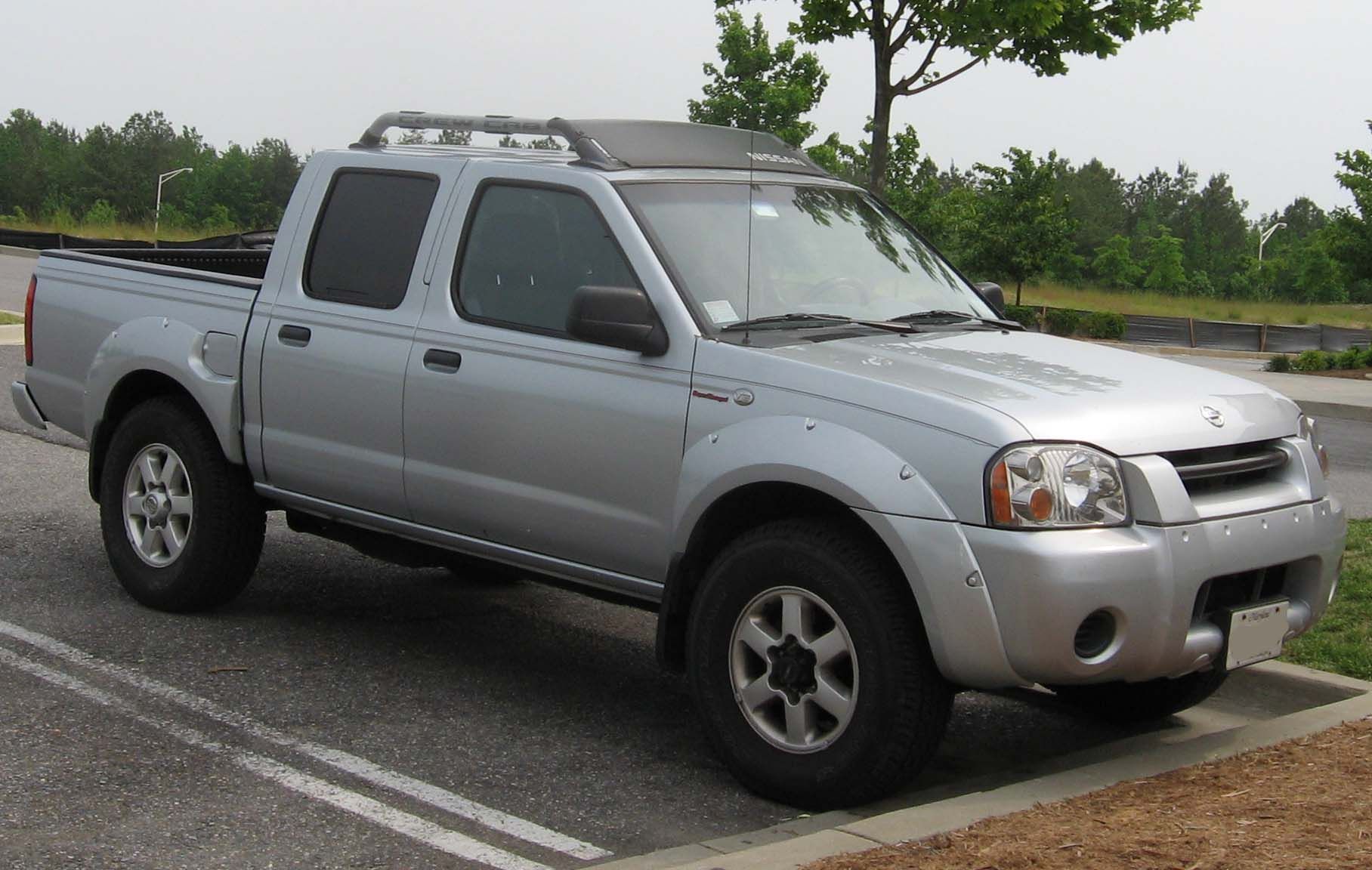
14. **Nissan Frontier**Next up in our catalog of regrets is the Nissan Frontier, a mid-size pickup truck that, for many owners, delivered far more headaches than utility. While trucks are often purchased for their rugged dependability, certain model years of the Frontier, particularly those produced between 2005 and 2010, were notorious for mechanical nightmares that left owners utterly exasperated, shaking their heads, and perhaps even, as the saying goes, pounding the dashboard with their fists.
The most infamous and devastating issue centered around a catastrophic design flaw related to the transmission. During these problematic years, the radiator had a nasty habit of leaking coolant directly into the transmissions, creating a sludge of destruction. The result? A litany of serious problems including slipping gears, gut-wrenching herky-jerky shifting, and ultimately, premature transmission failure. This wasn’t a flaw that could be easily ignored; it was a fundamental defect that sabotaged the very core function of the truck.
Beyond the transmission’s watery grave, owners of the Nissan Frontier also grappled with persistent engine issues and timing chain problems. These aren’t minor inconveniences; they are deeply rooted mechanical failures that require significant time and money to address, if they can be fully fixed at all. For a pickup truck that’s supposed to be a reliable workhorse, the Frontier in these years proved to be anything but, cementing its place as a vehicle many owners would gladly erase from their purchasing history if they had a time machine.
Car Model Information: 2015 Nissan Frontier PRO-4X
Categories: All set index articles, Articles with short description, Nissan vehicles, Set index articles on cars, Short description is different from Wikidata
Summary: The Nissan Frontier is a nameplate used on three different pickup truck models by Nissan:
Nissan Frontier (international), an alternative nameplate for the NP300/Navara on some markets
Nissan Frontier (North America), a rebadged NP300/Navara from 1997 to 2021, then became a separate model since 2021
Nissan Frontier Pro, a rebadged Dongfeng Z9 PHEV that will be available from 2025.
Get more information about: Nissan Frontier
Buying a high-performing used car >>>
Brand: Nissan Model: Frontier
Price: $17,865 Mileage: 154,112 mi.
Read more about: The No-Regrets Guide: Unmasking 15 Cars Owners Are Desperate to Trade Up From After Just One Year
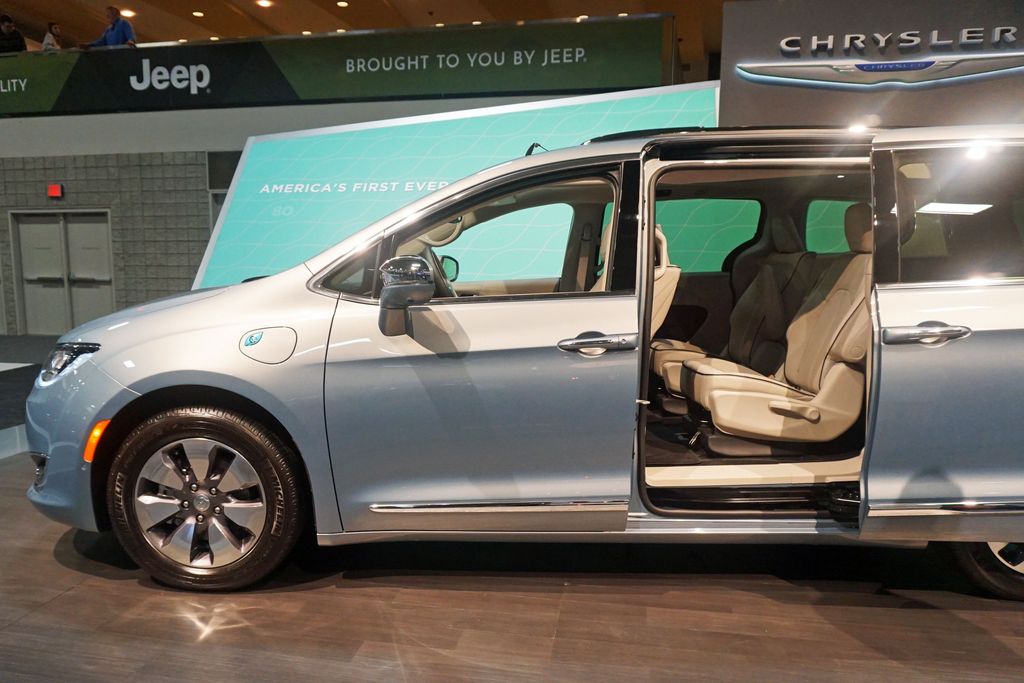
15. **Chrysler Pacifica Hybrid**And finally, we arrive at the Chrysler Pacifica Hybrid, a vehicle that, on paper, promised the best of both worlds: the practicality of a popular minivan combined with the fuel efficiency of a plug-in hybrid powertrain. It was an ambitious offering, designed to appeal to environmentally conscious families. However, as many owners can attest, the promise of green efficiency often came with a heavy dose of green-colored frustration, making it a prime candidate for an immediate “unbuy” decision if given the chance.
The core of the Pacifica Hybrid’s problems lay, perhaps ironically, in its very hybrid powertrain, specifically the battery and electrical systems. Owners frequently reported a range of exasperating issues, including battery drain that left them stranded, an inconsistent all-electric range that rarely lived up to expectations, and in the most severe cases, outright battery failure. When the very system designed to save you money and emissions becomes a source of constant unreliability, the appeal quickly evaporates, leaving behind only regret.
Adding to the hybrid woes was the electric continuous variable transmission, which also presented its own set of problems. This minivan, meant to be a smooth and efficient family carrier, instead became a masterclass in mechanical headaches. From its temperamental powertrain to its electrical gremlins, the list of frustrations for Pacifica Hybrid owners seemed to go on and on. It’s a stark reminder that even innovative technology, when poorly executed, can lead to profound buyer’s remorse, leaving owners wishing they had stuck with something simpler and, crucially, more dependable.
**Avoiding the Pitfalls: A Final Word on Savvy Car Shopping**
So there you have it, a sobering tour through 15 vehicles that left their owners yearning for a rewind button. This isn’t just a list of bad cars; it’s a testament to the brutal reality of buyer’s remorse when your hard-earned cash goes toward a rolling disappointment. But what can we, as fellow gearheads and everyday drivers, take away from these cautionary tales?
The biggest lesson is undeniably this: don’t let aesthetics or initial specs be your sole guide. A glossy finish or an attractive price tag can easily mask a multitude of sins beneath the sheet metal. These stories scream one consistent truth: real-world reliability and long-term ownership experience matter far more than fleeting curb appeal or a spec sheet optimized for a brochure.
Before you sign on the dotted line for your next vehicle, channel your inner detective. Dive deep into owner forums, scour reliability reports from trusted sources, and pay close attention to widespread complaints, especially those involving critical components like transmissions, engines, and electrical systems. Don’t be swayed by manufacturer hype; instead, arm yourself with the hard-won wisdom of those who’ve gone before you and, unfortunately, stumbled.
Car Model Information: 2021 Chrysler Pacifica Touring-L
Categories: All set index articles, Articles with short description, Chrysler vehicles, Set index articles on cars, Short description is different from Wikidata
Summary: Chrysler Pacifica is a nameplate used by Chrysler for a variety of vehicles.
The name was first used on a luxury minivan concept vehicle in 1999, and later a crossover concept in 2002.
From 2004 to 2008, it was used on a mid-size crossover, and since the 2017 model year, it has been used as the Town & Country minivan’s replacement.
Vehicles using the nameplate are:
Chrysler Pacifica concept (1999), concept minivan
Chrysler Pacifica concept (2002), concept crossover
Chrysler Pacifica (crossover) (2004–2008), production version of the 2002 concept
Chrysler Pacifica (minivan) (2017–present), Chrysler Town & Country replacement
Get more information about: Chrysler Pacifica
Buying a high-performing used car >>>
Brand: Chrysler Model: Pacifica
Price: $28,550 Mileage: 32,188 mi.
Read more about: Dealer’s Nightmare: The 8 Cars Nobody Will Buy Even with Massive Discounts
Because ultimately, buying a car should be an exciting journey, not a descent into mechanical misery. By learning from the regrets of others, you can make an informed decision that saves you not just money and time, but also a significant amount of heartache. Here’s to a future of happy driving and zero “unbuy” moments for all of us!


